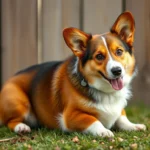
Introduction
Dogs have been companions to humans for thousands of years. With a vast number of dog breeds available, each comes with its own unique characteristics and traits, making the choice of a pet both exciting and challenging. For potential dog owners, understanding specific breeds is crucial, as it can influence compatibility with their lifestyle and living conditions. One breed that stands out is the Imperial Shih Tzu, a smaller, delightful variation of the Shih Tzu that has garnered attention for its affectionate nature and striking appearance. This article delves into the intricate details of the Imperial Shih Tzu, covering its history, physical attributes, temperament, health considerations, grooming needs, and lifestyle requirements.
Understanding Dog Breeds
Definition of Dog Breeds
A dog breed is defined as a specific group of domestic dogs with particular traits that distinguish them from other groups. These traits can include variations in size, coat type, color, behavior, and temperament. Understanding these characteristics is essential for prospective dog owners, as they help in selecting a breed that fits well with their lifestyle and preferences.
The Role of Breeding
Selective breeding plays a significant role in establishing and enhancing specific traits within dog breeds. Through this process, breeders aim to emphasize desirable characteristics such as appearance, temperament, and health. For instance, the Imperial Shih Tzu has been bred to have a smaller size while retaining the charming qualities of a standard Shih Tzu, such as its friendly demeanor and long, luxurious coat.
Categories of Dog Breeds
Dog breeds are often categorized into groups such as working, sporting, toy, hound, terrier, and herding. The Imperial Shih Tzu falls under the toy category, known for its small size, playful nature, and suitability as a companion dog. Understanding the category in which a breed fits can help owners anticipate exercise needs, temperament, and even potential health issues.
Overview of the Imperial Shih Tzu
History and Origins
The Shih Tzu breed has a rich history, dating back over a thousand years to ancient China. Originally bred as companion animals for royalty, these dogs were cherished for their loyalty and affectionate nature. The Imperial Shih Tzu emerged as a smaller variant, specifically bred to maintain the adorable traits of the Shih Tzu while providing a more compact and portable option for dog lovers.
Physical Characteristics
The Imperial Shih Tzu is known for its petite stature, typically weighing between 4 to 9 pounds and standing about 8 to 12 inches tall at the shoulder. Its coat is long, flowing, and comes in various colors, including gold, white, black, and combinations of these. Distinctive features include a short muzzle, large expressive eyes, and a tail that curls over the back, giving it a characteristic look that many dog enthusiasts adore.
Temperament and Behavior
The Imperial Shih Tzu is renowned for its friendly and sociable nature. These dogs are affectionate companions, known to bond closely with their owners. They are generally good with children and can adapt well to various living situations, making them suitable for families, singles, and seniors alike. However, socialization is crucial, as it helps them develop into well-rounded pets.
Health Considerations
Common Health Issues
Like many breeds, the Imperial Shih Tzu may be prone to specific health concerns. Some common health issues include brachycephalic airway syndrome due to their short muzzles, dental problems due to their compact jaws, and eye conditions like cataracts. Regular veterinary check-ups and awareness of these potential issues can help owners take preventive measures.
Regular Health Care
Routine health care for an Imperial Shih Tzu includes regular veterinary visits for vaccinations and check-ups. It’s essential to keep up with vaccinations to prevent diseases and to monitor for any emerging health issues. Discussing preventive care with a veterinarian can also provide tailored advice for individual dogs.
Nutrition and Diet
Feeding an Imperial Shih Tzu a balanced diet is vital for maintaining its health. High-quality dog food formulated for small breeds is recommended. It’s essential to control portions to prevent obesity, as these small dogs can gain weight quickly, leading to additional health complications.
Training and Socialization
Basic Training Techniques
Training an Imperial Shih Tzu can be a rewarding experience. Positive reinforcement methods work best, as these dogs respond well to praise and treats. Basic commands like sit, stay, and come should be taught early to instill good behavior. Consistency and patience are key, as these dogs can sometimes exhibit stubbornness.
Socialization Strategies
Socializing an Imperial Shih Tzu is crucial for developing a well-adjusted pet. Early exposure to various environments, people, and other animals can help reduce shyness and fearfulness. Dog parks, puppy classes, and playdates with other friendly dogs are excellent ways to promote healthy socialization.
Behavioral Issues and Solutions
Common behavioral issues in Imperial Shih Tzus include excessive barking and separation anxiety. Addressing these problems often requires a combination of training and environmental management. For barking, training can help them understand when it’s appropriate to bark. For separation anxiety, gradually acclimating the dog to being alone can ease their discomfort.
Grooming and Maintenance
Grooming Needs
The Imperial Shih Tzu requires regular grooming to maintain its beautiful coat. Ideally, owners should brush their dog’s coat at least two to three times a week to prevent matting and tangles. Professional grooming every 4 to 6 weeks may also be necessary, depending on the dog’s coat condition.
Bathing and Coat Care
Bathing an Imperial Shih Tzu should be done every 3 to 4 weeks, using a mild shampoo designed for dogs. It’s important to rinse thoroughly to avoid any residue that could irritate the skin. Seasonal grooming considerations include trimming the coat in warmer months to help keep the dog cool and comfortable.
Dental and Ear Care
Dental hygiene is vital for an Imperial Shih Tzu, as small breeds are often prone to dental disease. Regular brushing and dental treats can help maintain oral health. Ear care is also essential; owners should check the ears regularly for any dirt or wax buildup and clean them as needed to prevent infections.
Lifestyle and Living Conditions
Ideal Living Environment
The Imperial Shih Tzu is well-suited for apartment living due to its small size and moderate exercise needs. They thrive in indoor environments where they can be close to their owners. However, access to a secure outdoor area for playtime and bathroom breaks is beneficial.
Exercise Requirements
While the Imperial Shih Tzu does not require extensive exercise, daily walks and playtime are essential for keeping them healthy and happy. Engaging in activities like fetch or short play sessions can help them expend energy and maintain a healthy weight.
Compatibility with Other Pets
Imperial Shih Tzus generally get along well with other pets due to their friendly temperament. However, introductions should be done gradually and under supervision. It’s important to monitor their interactions to ensure that they feel comfortable and safe.
Conclusion
The Imperial Shih Tzu is a delightful breed that combines charm, affection, and adaptability. With a rich history, unique physical characteristics, and loving temperament, they make wonderful companions for a variety of lifestyles. By understanding their specific needs regarding health, training, grooming, and socialization, prospective dog owners can make informed decisions about welcoming an Imperial Shih Tzu into their homes. Ultimately, considering one’s lifestyle and preferences is essential in choosing the right dog breed, ensuring a harmonious relationship between pet and owner.









